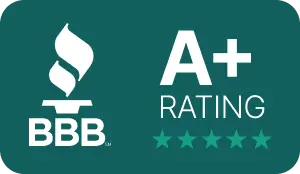Why 2025 feels different
Rising interest rates, record wealth transfers, and a maturing probate‑funding sector are converging in 2025 to redraw the map for heirs and investors alike. Venture‑backed FinTech platforms have moved from beta launches to mainstream adoption, regulators have sharpened their pencils, and families settling estates now expect the same one‑click convenience they enjoy with everyday banking. For a probate funding company that bridges beneficiaries and capital, these forces present both opportunity and responsibility.
The FinTech wave: from paper files to APIs
Just three years ago, most inheritance funding decisions relied on scanned wills and county clerk PDFs. Now, automated title pulls and real‑time estate‑asset verifications feed directly into underwriting engines. This shift means faster term sheets and, in many cases, lower fees. It also rewards heirs who craft a pre‑distribution game plan; clean documentation and organized statements sync seamlessly with digital intake portals, shaving days off approval cycles.
Artificial intelligence adds another layer. Natural‑language tools summarize probate pleadings in seconds, flagging potential creditor claims long before they derail a funding request. Meanwhile, open‑banking APIs confirm beneficiary identity and banking details without faxed statements. The result: funding windows that once stretched two weeks now close within 72 hours—crucial when estate expenses can’t wait for the court calendar.
Regulatory spotlight intensifies
With speed comes scrutiny. Throughout 2024, state legislators debated whether inheritance funding resembles consumer credit or asset sales. The emerging consensus in early 2025 points to enhanced disclosure rather than outright reclassification. Expect standardized rate boxes, clear rescission periods, and plain‑language summaries of assignment clauses. Forward‑looking funders already embrace this transparency; it aligns with the ethos behind a straightforward probate advance that converts future distributions into present dollars without compounding interest.
Federal agencies are also watching. The Consumer Financial Protection Bureau’s 2025 priorities include “innovative liquidity products”, a category that explicitly mentions estate advances. While full‑scale federal rules remain a year or two away, companies are ramping up compliance talent and auditing algorithms for bias. Heirs benefit from these guardrails: streamlined disclosures help them compare offers apples to apples, and better data security protects sensitive family information.
Macroeconomics and liquidity demand
High policy rates have made traditional home‑equity lines pricier, nudging heirs toward specialized estate‑funding channels. Yet the same rate environment attracts yield‑hungry institutional capital looking for short‑duration, asset‑backed paper. That supply‑and‑demand dance keeps advance costs relatively stable even as bank credit tightens—especially important if a mild downturn materializes.
During past contractions, access to cash decided whether beneficiaries could keep estate real estate or were forced sellers. The 2025 playbook borrows heavily from the liquidity playbook in down cycles, pairing advances with tactical refinancing or short‑term portfolio loans so heirs can ride out soft markets without fire‑selling legacy homes or appreciated securities.
Behavioral finance meets bereavement
Cutting‑edge technology and efficient pricing mean little if heirs feel emotionally overwhelmed. Funding requests often arrive while families are still writing eulogies, and the cognitive load is real. FinTech portals now integrate guided questionnaires co‑designed with psychologists, steering users toward healthy decision‑making while acknowledging grief. This “digital empathy” echoes the importance of balancing sorrow with sound money decisions—a critical safeguard when quick cash can look like an easy escape from pain.
Risk management: keeping scams at bay
Faster funding pipes unfortunately attract faster fraudsters. Deep‑fake audio and spoofed court filings can dupe both heirs and lenders. In response, facial‑recognition sign‑offs and blockchain‑stamped document ledgers are becoming standard. For beneficiaries, the simplest defense remains awareness of spotting subtle fraud cues—verify caller identity, read contracts line by line, and involve the estate attorney before signing.
Dispelling myths in a data‑driven era
Despite industry evolution, myths linger: advances are “loans”, heirs lose legal standing, or rates always exceed credit‑card APRs. These claims dissolve under modern analytics and transparent term sheets, effectively clearing up prevalent misunderstandings about estate funding. Algorithms now calculate net‑present‑value costs against likely distribution dates, giving beneficiaries objective comparisons. When software shows that a time‑discounted fee is cheaper than listing inherited property during a buyer’s market, informed heirs act confidently.
The path forward: hybrid human‑digital service
Looking ahead, the winning model blends algorithmic underwriting with seasoned probate specialists. AI can parse a 50‑page court order, but only a human underwriter can reassure a granddaughter worried about family optics. This hybrid approach also aligns with financial‑planning best practice: a modest inheritance advance paired with a fiduciary’s investment roadmap can meet immediate obligations while preserving long‑term goals.
Conclusion: opportunity wrapped in responsibility
Inheritance funding in 2025 is faster, safer, and more transparent than ever, yet complexity still lurks beneath the surface. FinTech tools slash wait times, regulators sharpen consumer protections, and capital markets keep pricing competitive. For heirs, the takeaway is clear: prepare documentation early, stay alert to scams, respect the emotional journey, and partner with funding providers that lead on compliance and client education. When those pieces align, accessing an estate’s value before the court’s final decree can be a strategic bridge—not a leap into the unknown.








